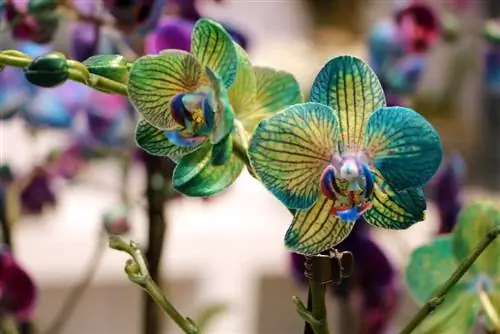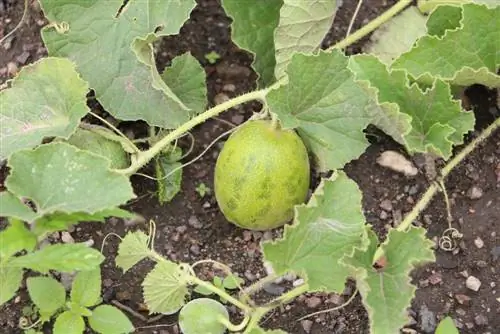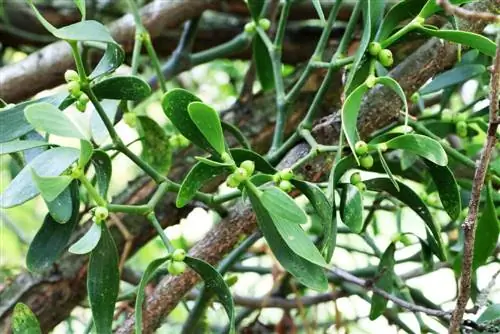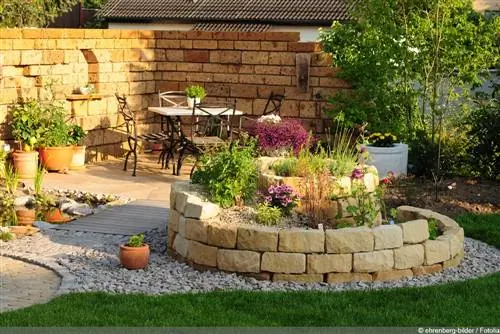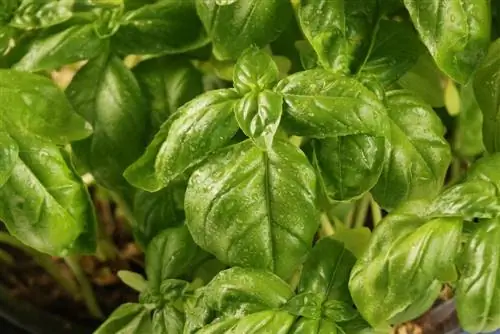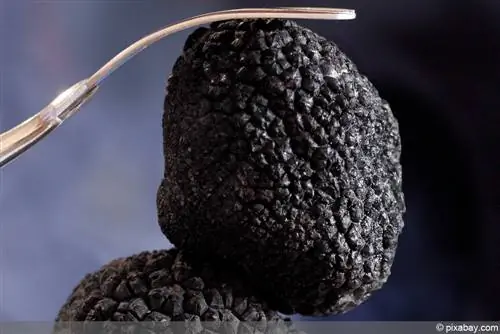- Author admin [email protected].
- Public 2023-12-17 03:39.
- Last modified 2025-01-24 12:45.
Flowers with an intense blue color are rare in nature, which is why they are even more popular with garden lovers. Despite all the breeding successes, no subspecies of orchids with permanently blue flowers have yet been able to establish themselves. But there are definitely tricks that you can use to dye the flowers blue yourself.
Coloring cut flowers for the vase
Recoloring white orchid flowers to an extraordinary shade of blue works in a similar way to the process often used for coloring tulips or roses: the cut flowers are simply placed with their stems in colored water, whereupon a more or more color gradually forms the flowers change color less. For example, blue ink or water-soluble food coloring can be used for this coloring method. The dosage of the dye in the water of the flower vase has a significant effect on the achievable color of the flowers dyed in this way.
Experiments with colored irrigation water
Unfortunately, dyeing orchids that are still alive is not quite as easy as dyeing flowers that have already been cut off. This may be due not least to the fact that orchids absorb very little liquid through their roots. If you can achieve a blue coloring of appropriately treated orchid flowers in the long term using this method, it will only be observed in isolated spots and only to a weak extent and intensity. Since orchids are generally quite sensitive, if a large amount of blue writing ink or other dyes are added to the water, they can sometimes die beyond repair.
Change the flower color via infusion
The particularly impressive, bright blue specimens of the Phalaenopsis (butterfly orchid) in specialist stores are usually very easy to detect as to the “cheating” in the flowers. Simply look along the flower stalk for a blue colored puncture site or check the aerial roots for a gradual blue color. Both clues are clear indications of the infusion method that was developed by a Dutch orchid breeder: a special dye is injected using a hypodermic needle directly into the conductive pathways inside the flower stalk of an orchid.
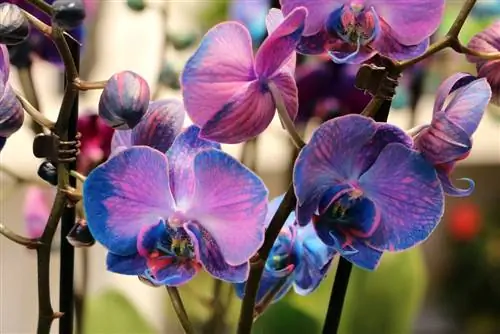
From there, the (in most cases blue) dye gradually spreads to the different areas of the plant via the fluid circulation within the plant, with white flowers being particularly “susceptible” to the visibility of the color stored in this way are. In principle, all colors can be used in this way to recolor a white-flowering orchid species. In practice, however, shades of blue are preferred, as other flower colors such as pink or yellow can also be grown naturally and thus permanently color-stable.
Tip:
To color an orchid blue using the infusion method, you should choose a specimen with fresh, unbloomed flower heads. Experience has shown that much better results can be achieved with blue dyeing than with infusion into the ducts of already flowering specimens.
Choose the right material
Blue ink is not suitable as a dye for the infusion method on orchids, as it would clog the pores of the sensitive orchids when dry. Special dyes such as brilliant blue FCF “E133” are generally difficult to obtain, which is why water-soluble food coloring should be used despite the less strong coloring effect. You will also need the following accessories to dye orchids blue using the infusion method:
- a syringe with an injection needle about 1.5 mm to 2 mm thick
- if applicable an infusion container for the dye
- Rubber rings for temporarily fixing the infusion
- Cinnamon for wound care
You can get the relevant utensils from the pharmacy. It is important to choose a suitable injection needle: thicker needles would cause unnecessary damage to the conductive pathways in the flower stalk of a Phalaenopsis, while thinner needles can cause problems with the thickness of the dye solution.
Procedure for color injection
First of all, the orchid you choose should have white or at least a light flower color. A few days before the color injection, the selected plant should no longer receive any watering and should be sprayed with a maximum of a little water. Then proceed as follows to color the flowers blue using the injection or infusion method:
- Dissolve the water-soluble food coloring in a cup of room temperature, soft water
- Pull up the syringe with the color solution or fill it into the infusion container
- Choose a point as discreet as possible (poorly visible) near the base of the plant as the injection site
- Very carefully insert the injection needle into the middle of the flower stalk
- Be careful not to puncture the flower stem
- Put the needle diagonally downwards into the stem and attach the syringe to it with a rubber ring
- Apply gentle pressure on the syringe several times a day or allow the color solution to drip in from the infusion bag
- Closing and disinfecting the wound site with a little ground cinnamon
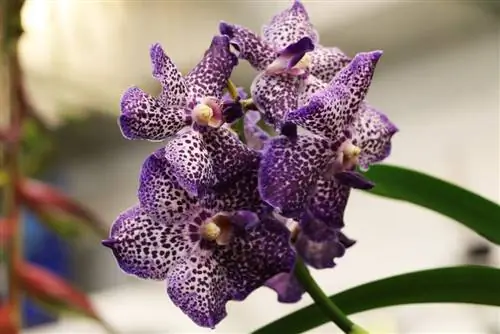
In order to achieve a highly noticeable effect of the blue color, a constant supply of color over a longer period of time is necessary. Forcing a large amount of paint into a Phalaenopsis at once can result in the death of the plant. Clearly visible results should be observed after just a few hours if the procedure is correct. Basically, this dyeing method must be repeated after the flowers have died so that blue orchid flowers can develop again in the following year.
Alternatives to artificial blue coloring
Specialist retailers also sell orchid species with naturally blue flowers. This is not just about difficult to care for orchid species such as Vanda coerulea and Cattleya Portia coerulea, but also because the flowers have a much weaker and therefore more subtle blue color. Breeders can now also demonstrate initial success in the genetically influenced breeding of blue-flowering orchid species. The three downsides:
- the corresponding new breeds are not yet commercially available
- This is also probably a less pronounced blue color of the flowers
- crossing demanding orchid species results in a higher care requirement than butterfly orchids (Phalaenopsis)
However, the question also arises as to whether the uncomplicated availability of naturally blue orchids would not destroy the current “special charm” of these plants. In this respect, the artificial blue coloring of orchids is currently still an interesting gimmick for orchid lovers, as long as the elaborately bred, bright blue-flowering species have not yet arrived in garden centers as everyday goods.

